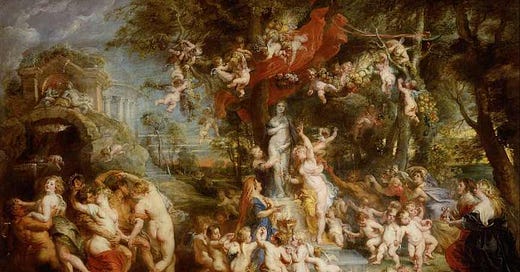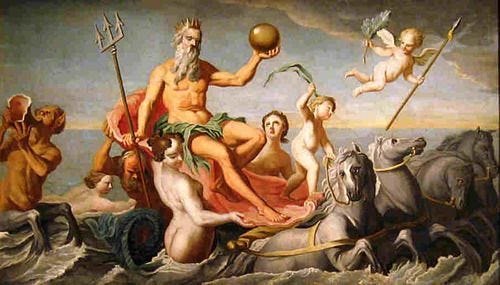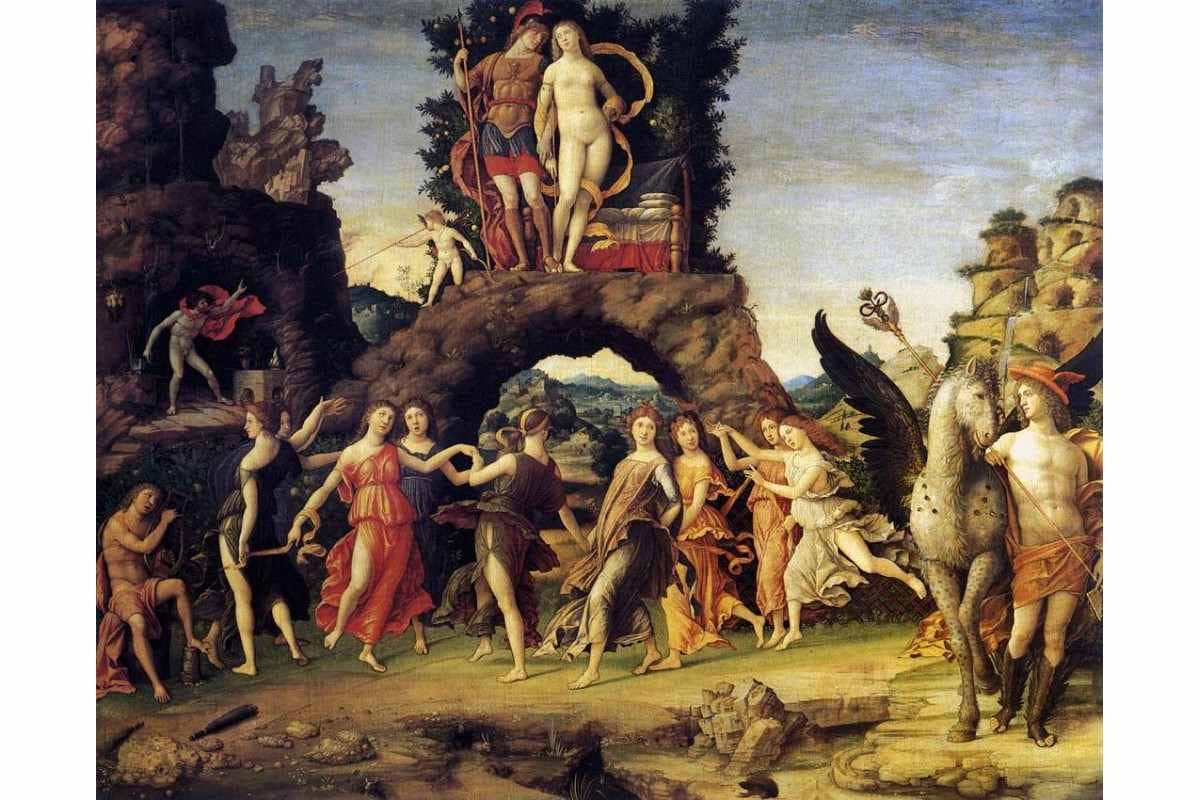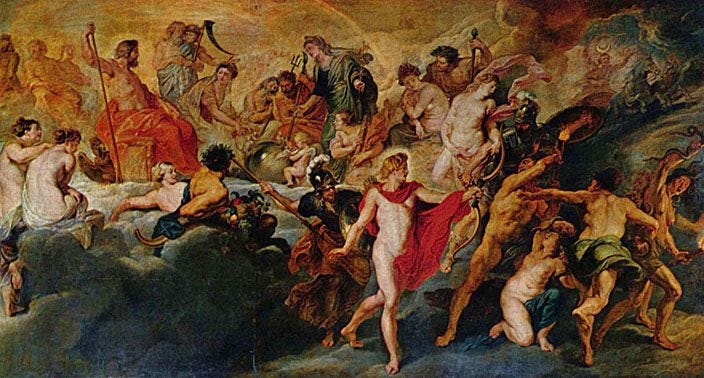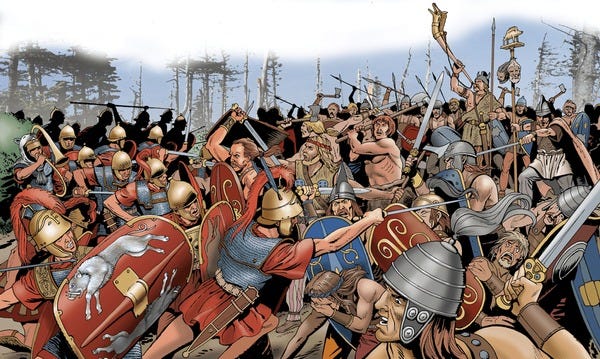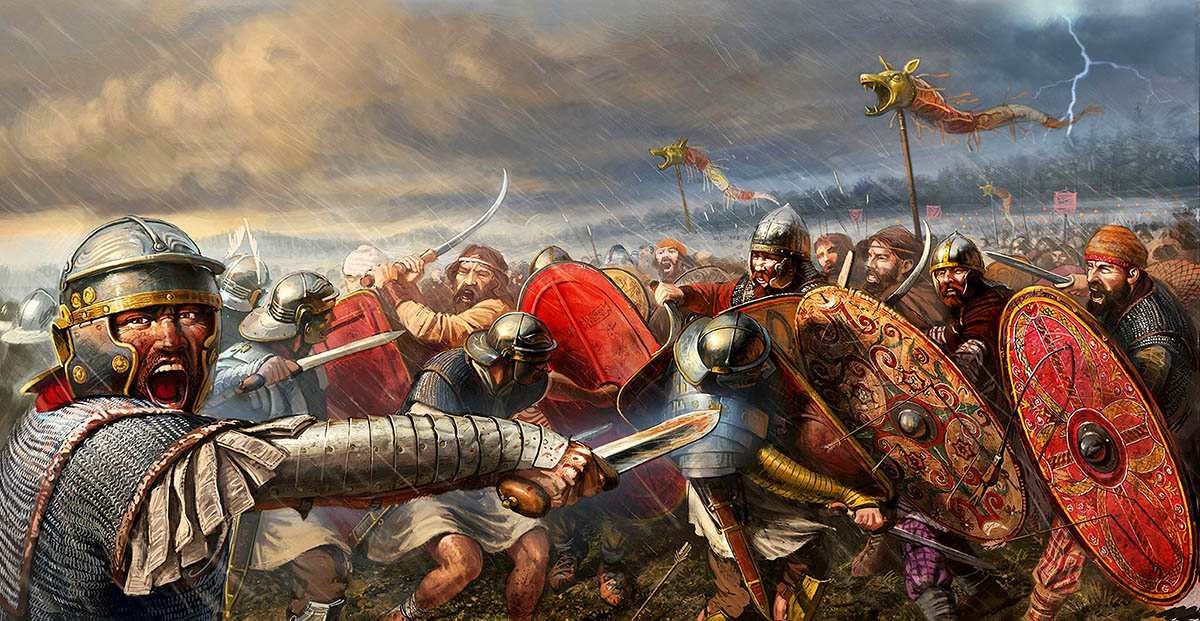Hello Dear Readers,
Today we embark on the journey of belief. What beliefs you may ask? The beliefs that helped a people conquer countries, a continent, and the known world. If you have not guessed yet, we will be discussing the Roman Gods and Goddesses that ruled the hearts and minds of Ancient Rome. So come, dear reader, take a seat around my fire and let’s begin. Jupiter looks down upon us and waits for the men who worship him to march.
Our Deities
Dear reader, in this publication will be taking a bit of a different path. Instead of dwelling and discussing one specific event, we will discuss one of the drivers behind them. This driver will be a rather large one: religion.
To discuss Roman religion requires a rather large amount of context, specifically context regarding their origins.
Now, dear reader, you may have noticed I put the Roman gods and the equivalent Greek gods below. While the Roman and Greek gods were not the same, they were certainly similar. To be clear, this is a valid line of questioning as there are a number of similarities between the Greek gods and Roman gods.
In terms of our similarities, both pantheons feature gods with analogous identities and roles, such as Zeus and Jupiter or Aphrodite and Venus, who often oversee similar domains like love, war, and beauty. Their myths are usually parallel with each other, with the Roman versions retaining core narratives but with different names and cultural nuances. Both Greek and Roman gods are anthropomorphic, which means the gods display human-like qualities and emotions, which makes their stories relatable. They frequently intervene in human affairs, influencing the lives of the mortals that worship them. Additionally, the gods of both cultures were deeply integrated into everyday life, with temples, rituals, and festivals dedicated to them, reflecting the significant role of religion in ancient Greek and Roman societies. These similarities highlight the cultural exchange between the two civilizations, preserving and enriching both belief systems.
In terms of our differences, Roman gods are frequently associated with objects or actions, in contrast to the Greek gods, who are often embodiments of human personality traits such as love, hate, honor, and dignity. Think of Objectivity vs. Humanist gods (yes, I know that is an oxymoron).
I will give you an example. As we have established, Roman deities are typically linked to specific objects, actions, or aspects of daily life. Mars, the Roman god of war, symbolizes military might and strategic prowess, rather than chaotic passion seen in his Greek counterpart, Ares. Vesta, the goddess of the hearth, is more about the action of maintaining the household than a complex personality.
In essence, while Greek gods illuminate the spectrum of human emotions and personal struggles, Roman deities underscore the importance of objects and actions that sustain and structure everyday life.
Who was Who
There are 12 major Roman gods, often known as the Dii Consentes, who were considered principal deities in Roman religion:
Jupiter (Zeus in Greek):
Domain: King of the gods, sky, and thunder.
Description: Jupiter was the chief deity, often depicted with a lightning bolt. He was the protector of the state and the ruler of heaven and Earth.
Juno (Hera in Greek):
Domain: Queen of the gods, marriage, and childbirth.
Description: Juno was Jupiter's wife and sister. She protected women and presided over marriages. She is often depicted with a peacock.
Neptune (Poseidon in Greek):
Domain: God of the sea, earthquakes, and horses.
Description: Neptune was the brother of Jupiter and was depicted with a trident. He ruled over all bodies of water.
Minerva (Athena in Greek):
Domain: Goddess of wisdom, war, and crafts.
Description: Minerva sprang fully armed from Jupiter's head. She was a virgin goddess associated with strategic warfare and was also the patroness of artisans and intellectuals.
Mars (Ares in Greek):
Domain: God of war.
Description: Mars was a primary god of the Roman state, representing military power as a way to secure peace. He was often depicted in armor.
Venus (Aphrodite in Greek):
Domain: Goddess of love, beauty, and fertility.
Description: Venus was central to many myths and was the mother of Aeneas, the Trojan hero who became an ancestor of the Romans. She is often depicted with symbols of love like roses and doves.
Apollo (same in Greek):
Domain: God of the sun, music, poetry, and healing.
Description: Apollo was associated with the arts and was a god of prophecy and knowledge. He was often depicted with a lyre or a laurel wreath.
Diana (Artemis in Greek):
Domain: Goddess of the hunt, moon, and childbirth.
Description: Diana was Apollo’s twin sister and a virgin goddess. She was associated with wild animals and woodland and was also a protector of women in labor.
Vulcan (Hephaestus in Greek):
Domain: God of fire, metalworking, and craftsmanship.
Description: Vulcan was the blacksmith of the gods, forging weapons and armor. He was depicted with a hammer and anvil.
Vesta (Hestia in Greek):
Domain: Goddess of hearth, home, and family.
Description: Vesta was central to Roman domestic life and state religion, with her flame symbolizing the continuity of the state. She was served by the Vestal Virgins.
Mercury (Hermes in Greek):
Domain: God of commerce, communication, and travelers.
Description: Mercury was the messenger of the gods, known for his speed and agility. He was often depicted with winged sandals and a caduceus (staff).
Ceres (Demeter in Greek):
Domain: Goddess of agriculture, grain, and fertility.
Description: Ceres was vital to Roman life, overseeing crop growth and harvests. She was often depicted holding a sheaf of wheat.
The way a Roman would worship these gods was through cult worship. While that may sound dramatic, it is not so much as it may seem. It simply denotes the structured religious practices central to Roman life. Unlike personal connections with gods based on individual behavior, Roman reverence was rooted in the strict observance of religious rituals. Each god had dedicated idols, which households often housed, alongside public temples or altars where offerings and sacrifices were made by the community.
The World as a Gift from the Gods
Now, dear reader, we come to our climax as the Romans marched. They marched to conquer with their gods behind them as the gods played a pivotal role in the expansion of the Roman Empire, providing divine support and motivation for soldiers as they conquered vast territories across Europe. Central to this was the belief that the gods were directly involved in the success of military campaigns. Soldiers and commanders alike sought the favor of these deities through rituals, sacrifices, and the erection of altars on battlefields. The conviction that they had divine backing instilled confidence and unity within the Roman legions, which was crucial for maintaining morale and discipline during long and arduous campaigns.
The Sacred Eagle Standard, carried at the vanguard of every campaign, symbolized Jupiter. As the god of the sky and thunder, he was seen as the ultimate authority who could bless the Roman state with favorable omens and victories. Commanders often performed auguries and consulted Jupiter's will through the interpretation of natural signs, believing that his approval was essential for any military endeavor. Victories were frequently attributed to Jupiter's favor, and triumphant generals would dedicate their spoils and achievements to him, ensuring continued divine support.
Mars, the god of war, held a special place in the hearts and minds of Roman soldiers. As the embodiment of military prowess and strategy, Mars was invoked before battles to grant strength and victory to the Roman soldiers. His festivals, such as the Feriae Marti, involved elaborate ceremonies and sacrifices, reinforcing the soldiers' belief that Mars was with them in every conflict. The presence of Mars' symbols on the battlefield served as a powerful reminder of their divine protector, inspiring courage and relentless fighting spirit among the troops.
Vesta, the goddess of hearth and home, played a more subtle yet equally important role. Her eternal flame, maintained by the Vestal Virgins, symbolized the continuity and stability of Rome itself. Soldiers carried small replicas of this sacred fire on their campaigns, a tangible link to their homeland and the divine protection it offered. This connection provided a spiritual anchor for the soldiers, reminding them of what they were fighting for and giving them a sense of purpose and resolve.
The Transition
Well, dear reader, even as the world became free from Rome, we see the Romans becoming free from their gods as well. However, even if humans avail themselves of one belief, they will need another to replace it. It has always been this way, even today. The Roman gods went by the wayside as Rome chose a new God and found Him in the Lord and Savior, Jesus Christ.
This is an extensive subject of discussion that is still having effects to this day, as the Roman Catholic Church is still here and growing by the year. However, back then, Christianity was not fully accepted until 313 AD, with the Edict of Milan, when Constantine the First declared that Christianity will have full religious toleration.
An interesting side note is that the even though Rome was beginning to show signs of decadence, they still were managing to conquer. However, this time it was not by the sword but by belief.
The Roman Empire conquered more of the world through Roman Catholicism than they ever did by the sword as there are Roman Catholics found in nearly every country on Earth. This gives thought that perhaps the Roman Empire never fell, perhaps it is here and stronger than ever. Though it is through their new God and not the old ones.
It truly makes one wonder whether Rome truly ever fell or simply adapted.
I will let you decide.
Well dear reader, as the Roman Empire retreats into history, it seems the Sun does set on some empires. It was my pleasure introducing you to something a little different. Everyone always enjoys talking about events but motivators are just as important, for context is key. Join me next time when we will be discussing a truly delicious topic that fuels the spirit as much as the body.
-Flint

